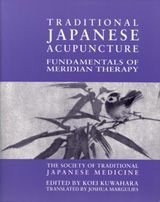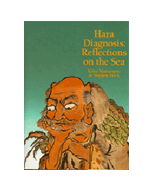We use cookies to make your experience better. To comply with the new e-Privacy directive, we need to ask for your consent to set the cookies. Learn more.
Traditional Japanese Acupuncture: Fundamentals of Meridian Therapy
Meridian Therapy, the system of traditional acupuncture utilized in Japan and based on the acupuncture classics (e.g., the Su Wen, Ling Shu, and Nan Jing) is a very sophisticated treatment modality that has much to offer and much to teach to western students, practitioners, and their patients. The authors, a group of Japan's foremost teachersd and clinicians, have compiled a work that provides a wide-ranging, accurate, and detailed foundation for students learning acupuncture or for clinicians who want to expand their knowledge base. This is a most welcome work that is an impportant and pivotal contributuin to the U.S. acculturation of classical Chinese acupuncture.
Chapter 1 covers the principles, philosophy, and history of Meridian Therapy, and Chapter 2 offers an introduction to the basics- including yin and Yang, Five Phases, Ki, Blood, and Fluids, and deficiency and excess. Chapter 3 contains an overview of the meridians and points, then a channel-by-channel description of channel flow, connecting vessel, divergent channel, and channel sinews for each of the 12 main channels and an explanation and description of the flow of the 8 extraordinary vessels. Chapter 4 covers the viscera—the hollow and solid organs—describing the nature, areas of control, functional properties, seasonal relationship, and paired organ relationship. Chapter 5 delves into the eitology of disease factors, giving details of constitutional patterns, deficiency/excess patterns, heat/cold patterns, and their combinations, and articulating endogenous factors such as emotions, fatigue, and dietary consumption and also exogenous factors of season, temperature, and weather.
Chapter 6 contains a discussion of symptoms and pathology that is methodically laid out according to yin/yang-five phase-deficiency/excess patterns and paired organ and extraordinary vessel relationships. chapter 7 covers diagnosis, beginning with the three methods of looking, listening and smelling, and questioning, then proceeding to abdominal diagnisis and patterns, back examination, and meridian palpation. chapter 8 is entirely given over to pulse palpation, one of the most important diagnostic tools in Meridian therapy. there are pulse diagnosis techniques for the beginning student well as the advanced practitioner, and detailed coverage of 30 different pulse patterns and 13 different deficiency patterns. finally, in chapter 9, treatment strategies and procedures, point selection for root treatment (including from chapters 69, 75 and 68 of the Nan Jing), point selection for local treatment, and different types of treatment are presented.
| Summary | The authors, who are among Japan’s foremost teachers and clinicians, cover the historical development of meridian therapy, introduction to basic theories, channels and points, aetiology of disease, constitutional and other patterns, symptoms and pathology, diagnosis, pulse palpation, treatment strategies and procedures. For students and practitioners. |
|---|---|
| Author | Koei Kuahara |
| Publisher | Paradigm Press |
| Number of Pages | 389 |
| Book Format | Softback |
* Orders shipped outside of Europe are eligible for VAT relief and will not be charged VAT.




